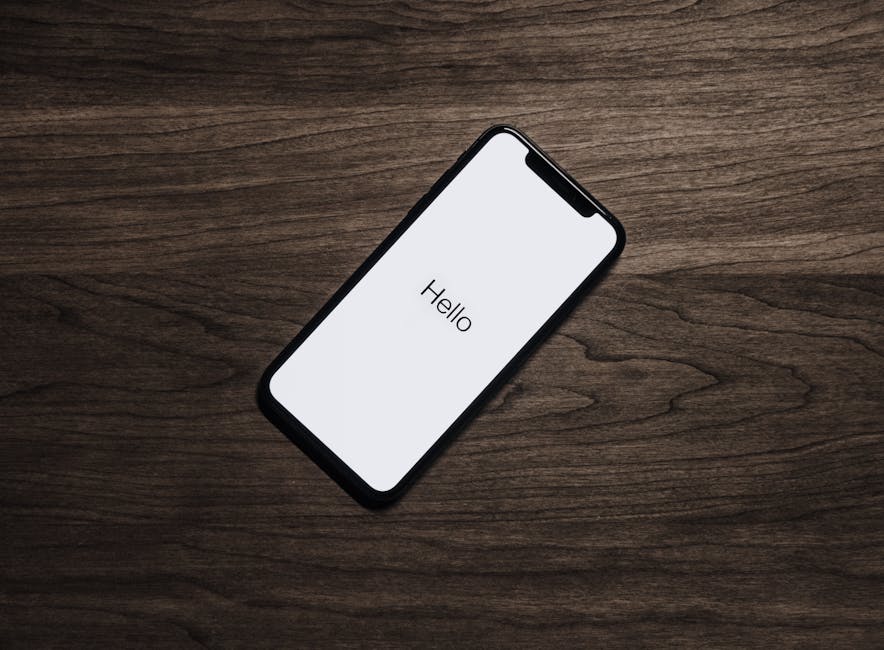For years, whispers of an iPhone Air have circulated amongst Apple enthusiasts. The promise? A dramatically thinner, lighter, and potentially more affordable iPhone, capitalizing on the “Air” branding synonymous with sleek design and portability. But is an iPhone Air simply wishful thinking, or a genuine product in Apple’s development pipeline? Let’s dive into the rumors, analyze the potential benefits, and consider the challenges Apple faces in bringing this elusive device to life.
The Allure of an Ultra-Thin iPhone
The appeal of an iPhone Air is undeniable. Imagine an iPhone that feels almost weightless in your hand, slipping effortlessly into your pocket. Beyond aesthetics, a thinner profile could lead to ergonomic improvements, making the device more comfortable to hold and use for extended periods. This lighter, more portable design would appeal to users prioritizing convenience and ease of use.
Benefits of a Thinner Design
Enhanced Portability: A slimmer profile makes it easier to carry in pockets and bags. Improved Ergonomics: A thinner device can be more comfortable to hold, especially for smaller hands. Aesthetic Appeal: A sleeker, more minimalist design aligns with Apple’s design philosophy. Potential for New Materials: A new design could allow for the use of innovative, lightweight materials.
iPhone Air Rumors: What We’ve Heard So Far
While Apple remains tight-lipped, various sources have fueled the iPhone Air speculation. Some rumors suggest a focus on affordability, positioning the iPhone Air as a mid-range option alongside the flagship Pro models. Other rumors highlight the potential for advanced display technology and innovative power management to compensate for the reduced internal space.
Specific Rumored Features
Targeted Release Date: Speculation ranges from late 2024 to 2025. Potential Price Point: Rumors suggest a price between the iPhone SE and the standard iPhone model. Display Technology: Some rumors point to the use of a more energy-efficient display to maximize battery life. Processor: Analysts predict a slightly less powerful processor than the Pro models to further differentiate the product. Camera System: Expectations vary, but a dual-lens camera system is a likely scenario.
Overcoming the Challenges of a Thin iPhone
Creating a significantly thinner iPhone presents significant engineering challenges. Shrinking components like the battery, camera module, and logic board requires innovative solutions and potentially compromises in performance or battery life. Apple must carefully balance design aspirations with the need to deliver a reliable and functional device.
Key Engineering Hurdles
Battery Capacity: Maintaining adequate battery life in a thinner chassis is a major challenge. Innovative battery technology and power management are crucial. Component Miniaturization: Shrinking internal components without sacrificing performance requires advanced engineering and manufacturing processes. Heat Dissipation: A thinner device may have less surface area for heat dissipation, potentially leading to overheating issues. Durability: Ensuring the structural integrity of an ultra-thin device is essential to prevent bending or damage. Camera Technology: The camera module often takes up a significant amount of space. Reducing its size without compromising image quality is a significant challenge.
The iPhone Air: Filling a Gap in Apple’s Lineup
An iPhone Air could strategically fill a gap in Apple’s product lineup, offering a compelling alternative to the more expensive Pro models and the budget-friendly iPhone SE. This would allow Apple to cater to a wider range of consumers, particularly those who prioritize portability and affordability without sacrificing the core iPhone experience. This iPhone Air could become a major market disruptor.
Target Audience and Market Positioning
Price-Sensitive Consumers: Attracts users looking for a more affordable iPhone option. Portability Seekers: Appeals to individuals who prioritize a lightweight and easily portable device. Entry-Level iPhone Users: Provides a stepping stone for users upgrading from older iPhones or Android devices. Students and Young Professionals: Caters to users who value both style and functionality without breaking the bank.
The Future of the iPhone Air: Speculation and Possibilities
Whether the iPhone Air becomes a reality remains to be seen. However, the persistent rumors and the inherent appeal of an ultra-thin iPhone suggest that Apple is actively exploring this possibility. If successful, the iPhone Air could redefine the smartphone landscape, setting a new standard for portability and design. It would be a very light and easy to carry phone.
Potential Impact on the Smartphone Market
New Design Trends: Could inspire other manufacturers to develop thinner and lighter smartphones. Increased Competition: Could intensify competition in the mid-range smartphone market. Technological Innovation: Could drive innovation in battery technology, component miniaturization, and display technology. Market Expansion: Could expand the iPhone’s reach to a wider range of consumers.
Ultimately, the success of an iPhone Air hinges on Apple’s ability to overcome the engineering challenges and deliver a device that balances thinness, performance, and battery life. Keep an eye on future Apple announcements – the dream of an iPhone Air might just become a reality. Stay tuned for updates and leaks as they emerge, and let us know in the comments if you’d be excited for an iPhone Air!






